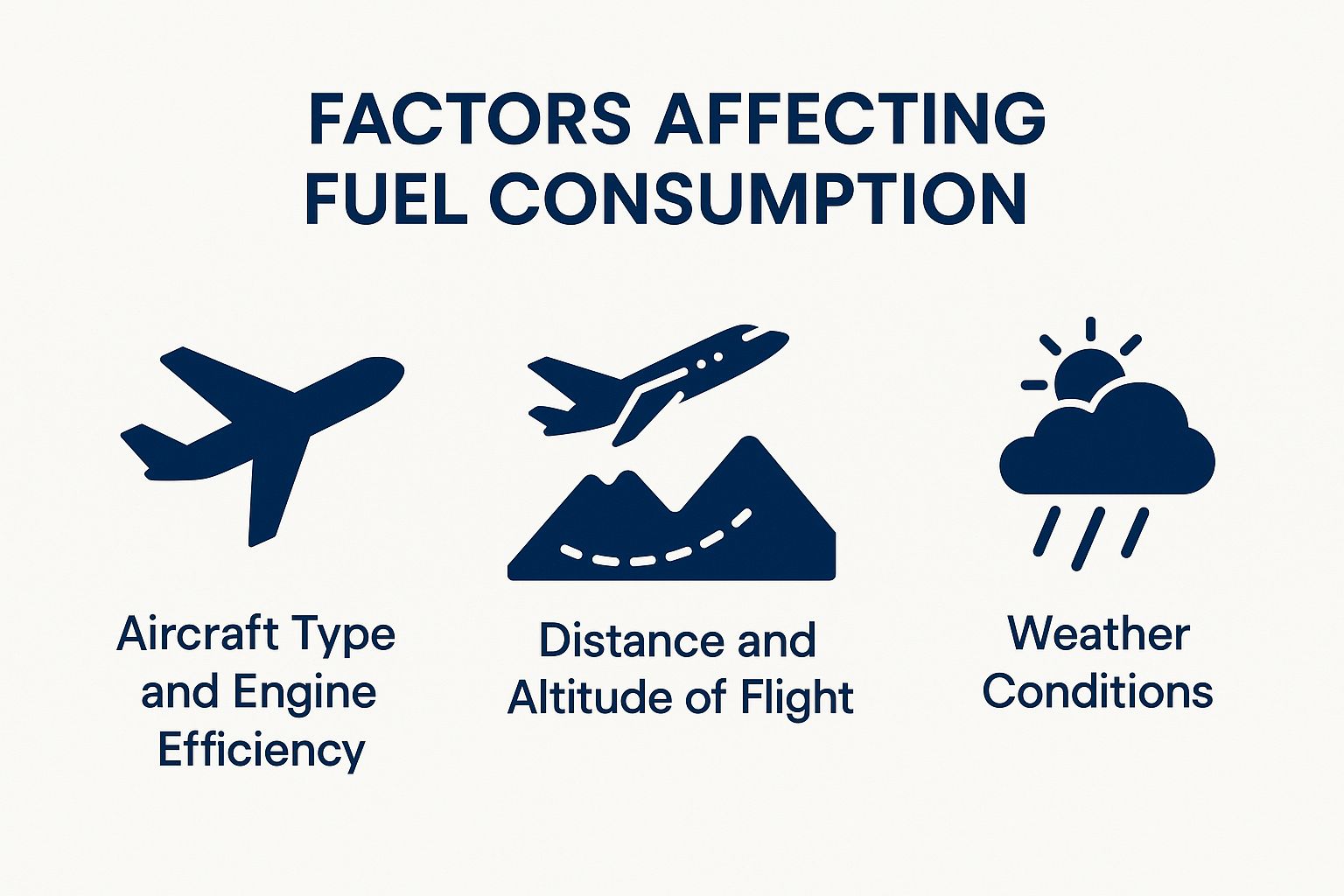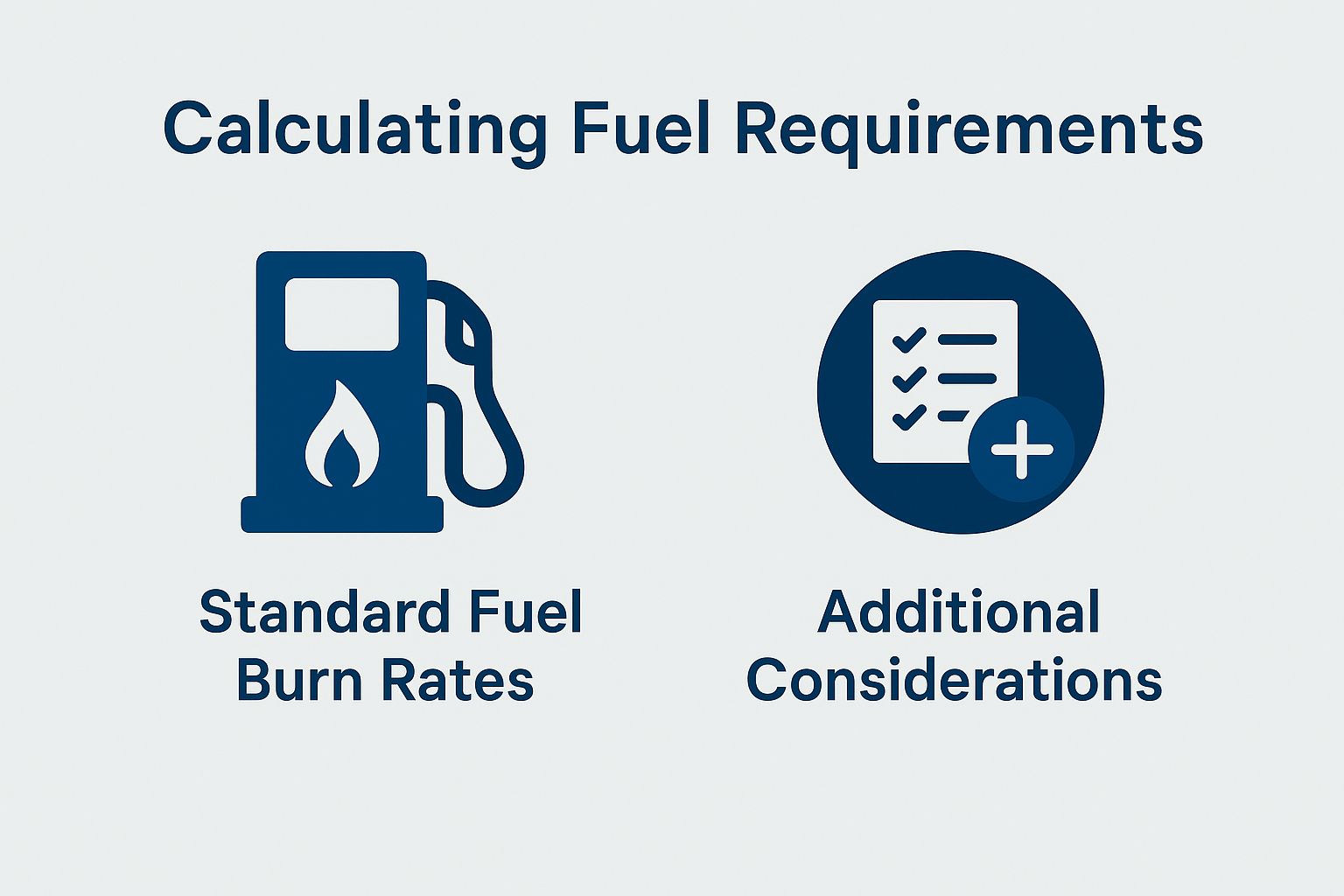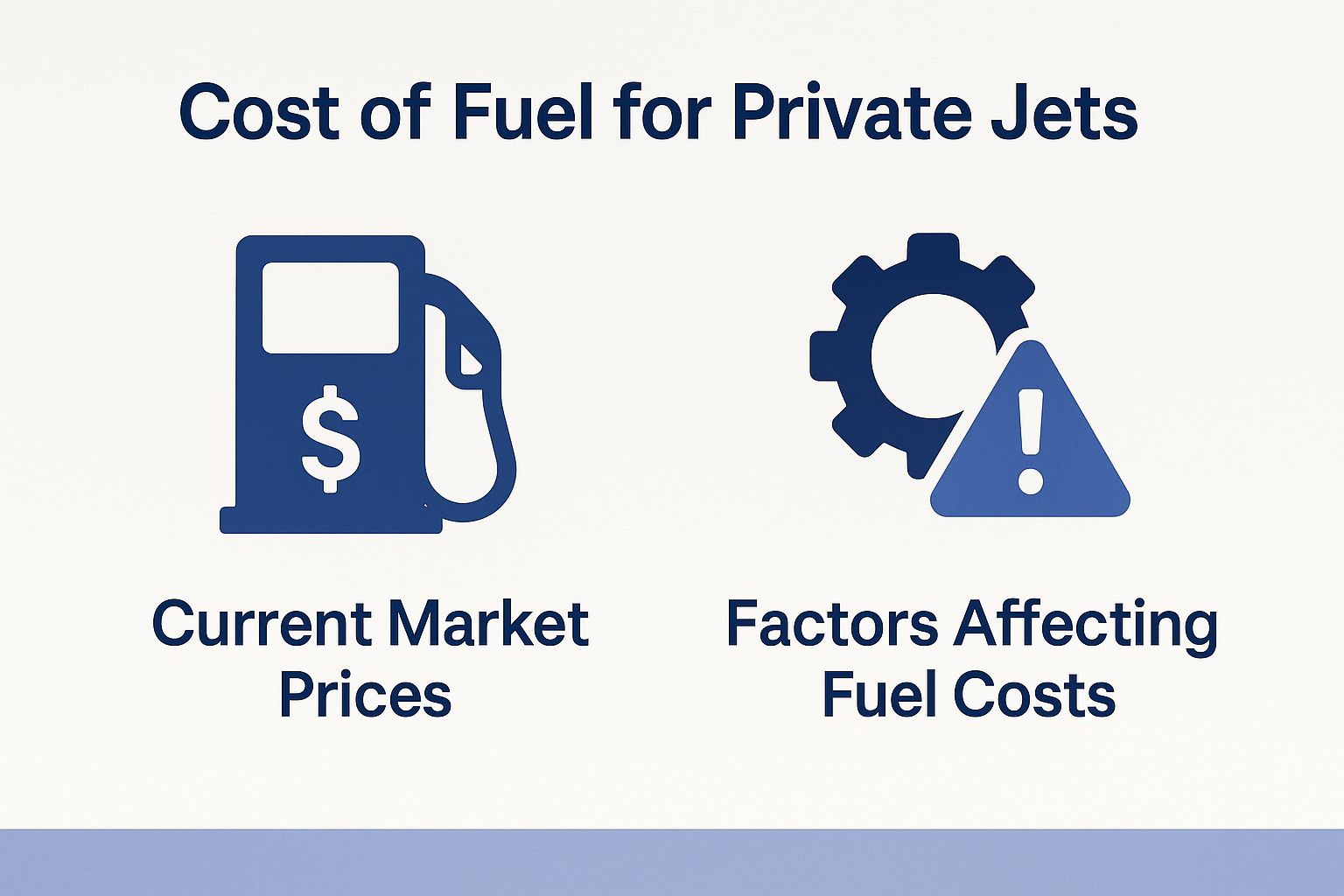
Fuel use is super important for flying private jets, totally affecting costs and how well they run. In this piece, we’re gonna dive into what really affects how much fuel you use, like what kind of plane you have, how its engine works, how far you fly, and the weather. We’ll also chat about how to figure out how much fuel you need, toss in some tips to save on it, and peek at the latest jet fuel prices. Plus, some handy tips on budgeting for fuel costs will help you get ready for your next trip!
Stuff That Affects How Much Fuel You Use
Fuel use is a big deal when you own a private jet, since it hits right on those operating costs and how well different planes work.
A bunch of things, like how big the plane is and how well its engine runs, really change how much fuel it eats up.
Several factors, including the size of the aircraft and the efficiency of its engines, significantly influence fuel consumption rates. These rates can also vary depending on the specific type of jet fuel used and the quality of aviation management practices implemented during operation.

Plane Type and How Well the Engine Works
What kind of plane you got really matters for how much fuel it uses, since different engines on private jets can mean different costs for keeping them running.
Take, for example, the Gulfstream G650ER, which is well-known for its powerful engines that offer exceptional range. However, this capability comes at a cost, resulting in higher fuel consumption rates compared to smaller aircraft like the Embraer Phenom 300.
This difference in engine efficiency can mean that operators of larger jets may encounter increased fuel expenses, which can add up quickly during long-haul flights. In contrast, the Phenom 300 is notable for its impressive fuel efficiency, contributing to lower operating costs and extending the lifespan of the aircraft by reducing wear and tear on its engines.
Ultimately, the choice of aircraft type can have significant implications for an operator’s financial performance, affecting both short-term expenses and long-term maintenance considerations.
How Far and High You Fly
How far you go and how high you fly really changes how much fuel your private jet will use.
When operators take these factors into account during flight planning, they can effectively lower operational costs while maximizing the aircraft’s range. For example, a mid-sized jet on a 1,200-mile journey can consume considerably less fuel by cruising at an altitude of 30,000 to 40,000 feet, where the thinner air enhances engine performance.
Similarly, a turboprop aircraft may find that flying at a lower, more economical altitude aligns better with its design and operational profile.
By checking out flight plans closely, charter services can save on fuel use, cut down on refuel costs, and make everything run smoother. This approach is especially important as market demands and environmental considerations continue to grow.
How Weather Affects Your Fuel Use
So like, weather can really change how much fuel private jets use, ya know? Since stuff like wind, heat, and rain can mess with the flight plan and fuel usage.
For example, strong headwinds can considerably increase fuel burn during a segment of the journey, leading pilots to adjust their altitude or change the route in search of more favorable conditions. On the other hand, tailwinds can offer a helpful advantage, allowing flight crews to save on both fuel and time.
Additionally, variations in temperature can impact engine performance; warmer air is less dense, which may affect lift and, consequently, fuel economy.
When confronted with inclement weather, such as thunderstorms or heavy rain, pilots may need to reroute, often selecting paths that optimize fuel efficiency while prioritizing passenger safety. These strategic adjustments not only promote cost savings but also contribute to more sustainable flight operations.
Figuring Out How Much Fuel You Need
Figuring out how much fuel you need for a private jet is kinda important, ya know?
Knowing this stuff really helps you plan flights right, trust me.

Fuel Burn Rates – What You Should Know!
So, fuel burn rates can totally change based on the jet you’re using, right?
These rates really mess with how much owning a jet costs overall. For example, larger jets tend to consume significantly more fuel compared to their smaller counterparts, which increases monthly operational costs.
Jet owners gotta be smart by checking out fuel efficiency regularly. Regular upkeep is essential to ensure that the aircraft operates at peak efficiency, which ultimately helps to reduce excessive fuel burn and extend the aircraft’s lifespan.
Doing this not only helps manage resources better but also makes things greener in the long run.
Other Stuff to Think About
When figuring out fuel needs for your jet, don’t just think about the usual numbers; also look at stuff like costs, seasons, and market trends.
These elements play a significant role in the availability and pricing of fuel. For example, during peak travel seasons, fluctuating demand can lead to increased prices or even shortages. Holiday seasons typically see a rise in private jet usage, which can constrain fuel supplies and drive costs higher. On the other hand, during off-peak periods, fuel prices may stabilize or even decrease.
Consequently, it is essential for operators to remain informed about current market conditions and adjust their flight plans as necessary. This might involve scheduling flights during less popular time slots or choosing alternative airports that offer more favorable fuel pricing.
Getting the Most Outta Your Fuel!
Maximizing fuel efficiency in private jet operations is essential for reducing overall fuel consumption and optimizing operating costs.
You can totally cut down on fuel use by doing a few smart things, such as:
- Stick to specs
- Plan flights smart
- Use jet charter services
Cool Tips to Save Fuel!
Picking jets with fancy engines and light materials can really boost fuel efficiency, ya know? Moreover, careful route planning that incorporates real-time weather data helps avoid unnecessary detours or altitude changes, which often lead to increased fuel burn.
For example, a business traveler may save thousands in operational costs by choosing a charter service that grants access to newer aircraft specifically designed for lower emissions and enhanced performance. These targeted strategies not only minimize environmental impact but also offer substantial financial savings over time, making them advantageous for both private owners and charter clients.
What You Gotta Pay for Jet Fuel!
Knowing how much jet fuel costs is super important for jet owners and operators. Current market prices for jet fuel can vary considerably based on several factors, such as fluctuations in oil prices and global supply dynamics.
What’s Fuel Costing Right Now?

Jet fuel prices right now really depend on what’s happening with oil prices.
All this unpredictability makes it tricky for jet owners to plan for these changing costs.
Hey, you know, when oil prices go up, it can totally make fuel costs skyrocket. This means higher expenses, which messes with budgets and might even force changes to travel plans, right?
So, to tackle these issues, lots of smart owners are jumping into fuel hedging stuff. They’re also checking how well their flights are running. Planning like this is super important for keeping profits up and making sure travel stays doable in a market that’s always changing.
What Affects Fuel Costs?
A bunch of things affect fuel costs for private jets, like oil prices, local taxes, and how much it costs to keep the planes running.
Oil prices can change a lot and really hit fuel costs hard. These prices are often swayed by worldwide market trends and political stuff. Plus, local taxes can add extra fees to fuel buys, which makes budgeting a bit of a headache.
Don’t forget, maintenance costs for jets are a big deal too. These can really pile on the total fuel costs. By keeping an eye on these key things, jet owners can manage their spending better and keep costs predictable and easier to handle.
Figuring Out Jet Fuel Budgets
Budgeting for private jet fuel is super important for keeping operating costs in check. You gotta do some math to estimate fuel costs, while thinking about flight routes and what’s happening in the market right now.
How to Figure Fuel Costs for a Trip
So, figuring out fuel costs for a private jet trip needs a bit of thought about a few things, like how far you’re flying, how well the plane uses fuel, and what the current jet fuel prices are to get a good estimate.
First off, you gotta find out how far your route is. You can usually do this with flight planning tools or aviation apps. Like, if your trip is 1,200 nautical miles, you’ll need to know how much fuel your specific jet uses, often counted in gallons per hour, and its cruising speed.
If your jet uses 300 gallons an hour and the trip takes about 4 hours, then you’re looking at around 1,200 gallons total. And since jet fuel prices can go up and down, let’s say it’s around $5 a gallon right now. That means the total fuel cost for this trip would be about $6,000.
By getting a handle on these numbers, you can budget for the trip better, making sure all expenses are in the travel plan.